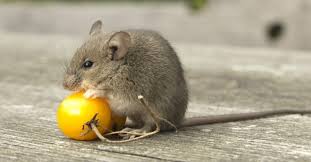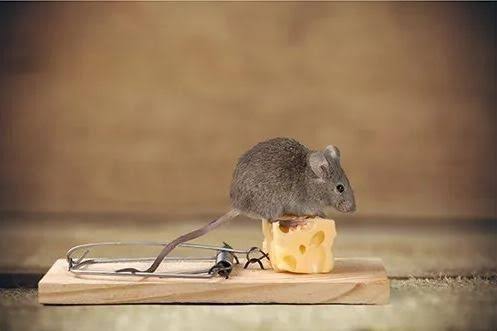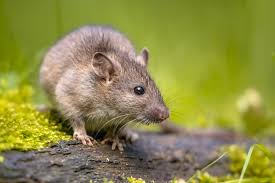Rodents are small mammals that have sharp front teeth, known as incisors, that never stop growing. This group includes familiar creatures like rats and mice, these furry animals are found in various environments around the world, from fields and forests to urban areas.
One interesting fact about rodents is their adaptability. Rats and mice, in particular, are skilled at adjusting to different surroundings. Their ability to thrive in diverse habitats has made them common inhabitants in both rural and city settings.
Rodents are generally nocturnal, meaning they are more active during the night. This behavior helps them avoid predators and find food more easily. Rats and mice have a keen sense of smell, which they use to locate food sources, often scavenging for grains, seeds, or even leftovers in human environments.
While rodents play a role in the ecosystem by serving as prey for larger animals, they can also be considered pests. In urban areas, they might invade homes, causing damage to property and spreading diseases. Pest control measures are often employed to manage their populations and reduce potential harm.
These creatures reproduce rapidly, with short gestation periods and large litters. This reproductive strategy contributes to their widespread presence. Despite their sometimes negative reputation, rodents are fascinating creatures with unique characteristics that allow them to survive and thrive in diverse conditions. Understanding their behavior and biology can help in finding effective ways to coexist with these small but resilient mammals.
Read Also: Swine Diseases and their Prevention Measures
Animals Affected by Rodents

Rodents, such as rats and mice, can have notable impacts on various ecosystems, affecting both other animals and their environments. One of the significant consequences is the potential harm to bird populations. Rodents are known to consume bird eggs and nestlings, posing a threat to the reproductive success of many bird species.
In agricultural settings, rodents can have detrimental effects on livestock. They may contaminate food sources and spread diseases to domestic animals. Additionally, rodents can damage crops, leading to economic losses for farmers. Their burrowing activities can also compromise the structural integrity of fields and cause soil erosion.
The presence of rodents can influence the behavior of larger predators. For example, an abundance of rodents may attract predators like foxes and birds of prey, altering the dynamics of local predator-prey relationships. This, in turn, can have cascading effects on other species within the ecosystem.
Rodents are also known vectors for diseases that can affect other animals, including humans. They can carry and transmit various pathogens through their urine, feces, or bites. This makes them potential sources of zoonotic diseases that can impact not only wildlife but also domestic pets and livestock.
In urban environments, rodents may compete with other small mammals for resources, leading to changes in the distribution and abundance of these species. Additionally, the spread of rodent-borne diseases in urban areas can have implications for public health.
Understanding the broader ecological consequences of rodent presence is crucial for implementing effective management strategies that balance the need for pest control with maintaining the health and balance of ecosystems. By considering the interconnectedness of species within an environment, conservation efforts can be more informed and sustainable.
Damages Caused by Rodents

Rodents, such as rats and mice, can inflict various damages, impacting both natural environments and human structures. One of the most common issues is damage to crops and stored food. Rodents are notorious for their gnawing habits, and in agricultural settings, they can destroy crops, contaminate stored grains, and reduce overall food supplies.
In urban areas, rodents can pose a threat to infrastructure. Their constant gnawing on wires, insulation, and wooden structures can lead to electrical failures, fires, and structural damage to buildings. This property damage can result in significant economic costs for homeowners and businesses alike.
Rodents are also known to carry diseases that can affect both humans and animals. The contamination of food and water sources by rodent droppings or urine can lead to the spread of harmful pathogens. Diseases such as leptospirosis, hantavirus, and salmonellosis are examples of illnesses associated with rodent infestations.
In agriculture, rodents contribute to post-harvest losses by consuming or contaminating stored grains. This not only affects the livelihoods of farmers but can also have broader implications for food security on a larger scale. Controlling rodent populations in agricultural settings is crucial for mitigating these economic losses.
Beyond economic and health-related impacts, rodents can disrupt natural ecosystems. Their burrowing activities can alter soil structure, contributing to erosion and affecting plant growth. Additionally, the predation of rodents on small birds and their eggs can influence local biodiversity and disrupt ecological balances.
Effective rodent control measures are essential to minimize these damages. Integrated pest management strategies, which consider a combination of preventive measures, habitat modification, and targeted interventions, can help strike a balance between controlling rodent populations and minimizing negative impacts on the environment and human activities.
Read Also: Neonatal Pig Diarrhoea: Clinical Signs, Prevention and Treatment
Control and Preventive Measures

Implementing effective control and preventive measures is crucial to manage rodent populations and minimize the potential damages they can cause. Here are key strategies:
1. Sealing Entry Points: Identify and seal gaps or openings in buildings to prevent rodents from entering. This includes gaps around windows, doors, and utility entry points.
2. Proper Food Storage: Store food in rodent-proof containers, especially in areas where rodents are prevalent. This reduces the attractiveness of environments for foraging.
3. Sanitation Practices: Maintain cleanliness in and around homes and businesses. Dispose of garbage regularly, as accumulated waste can attract rodents.
4. Eliminate Standing Water: Remove sources of standing water, as rodents also need water for survival. Fix leaks promptly and ensure proper drainage.
5. Use of Traps: Employ traps as a targeted method to capture and control rodent populations. Various types of traps, including snap traps and live traps, can be effective.
6. Chemical Control: Consider the use of rodenticides cautiously, ensuring they are applied in accordance with safety guidelines. Professional pest control services can provide expertise in this area.
7. Natural Predators: Encourage natural predators of rodents, such as certain bird species and snakes, to inhabit the area. This can help maintain a natural balance in the ecosystem.
8. Regular Inspections: Conduct regular inspections of both indoor and outdoor spaces to detect signs of rodent activity early. Early intervention can prevent infestations from escalating.
9. Integrated Pest Management (IPM): Adopt an integrated approach that combines various strategies. IPM involves assessing the specific situation, implementing a combination of methods, and monitoring the effectiveness over time.
10. Community Awareness: Educate the community about the importance of rodent control and preventive measures. Encourage collective efforts to maintain a rodent-resistant environment.
By combining these measures, individuals and communities can create environments that are less conducive to rodent infestations. Integrated approaches that consider both chemical and non-chemical methods are often the most effective in achieving sustainable rodent control while minimizing potential environmental impacts.
Frequently Asked Questions (FAQs) About Rodents
1. Q: What makes rodents like rats and mice different from other mammals?
A: Rodents are characterized by their continuously growing incisors, specialized for gnawing. This dental feature distinguishes them from other mammals.
2. Q: Are all rodents harmful, or do they have any positive roles in ecosystems?
A: While some rodents can be considered pests due to property damage and disease transmission, they also play essential roles in ecosystems as prey for larger animals and in seed dispersal.
3. Q: How do rodents impact agriculture?
A: Rodents can damage crops by gnawing on plants and consuming grains. Additionally, they may contaminate stored food, leading to economic losses for farmers.
4. Q: What diseases can rodents transmit to humans?
A: Rodents can carry diseases such as leptospirosis, hantavirus, and salmonellosis. These diseases can be transmitted through contact with rodent urine, feces, or bites.
5. Q: How can I prevent rodents from entering my home?
A: Seal entry points, store food in rodent-proof containers, maintain cleanliness, and eliminate standing water. Regular inspections and using traps can also help.
6. Q: Are rodenticides safe for use in controlling rodent populations?
A: Rodenticides should be used cautiously, following safety guidelines. Professional pest control services can provide expertise to ensure proper application.
7. Q: Do rodents have natural predators?
A: Yes, rodents have natural predators such as certain bird species, snakes, and mammals. Encouraging the presence of these predators can help control rodent populations.
8. Q: How fast do rodents reproduce?
A: Rodents have short gestation periods and can produce large litters, contributing to their rapid reproduction. This reproductive strategy varies among species.
9. Q: Can rodents cause electrical issues in buildings?
A: Yes, rodents are known to gnaw on wires and insulation, potentially causing electrical failures and fires. This is a common issue in urban areas.
10. Q: What is integrated pest management (IPM) in rodent control?
A: IPM involves a holistic approach to rodent control, combining various methods such as sealing entry points, using traps, and practicing good sanitation to achieve effective and sustainable results.
Read Also: How to Ace an Interview

